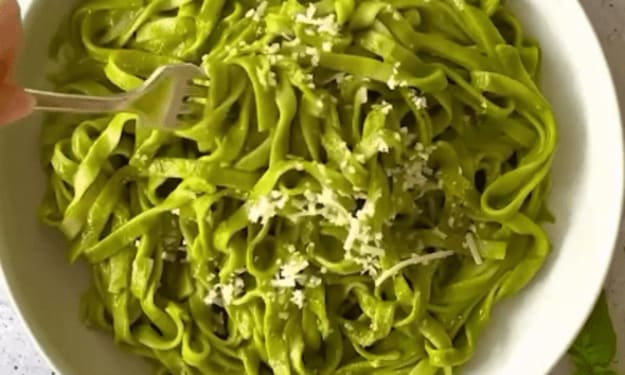Bee Balm: Guide to Growing Beautiful Plants & Flowers
Unleash the Beauty

Bee Balm, scientifically known as Monarda, is a perennial flowering plant native to North America. It is a member of the mint family, Lamiaceae, sometimes called Bergamot or Oswego tea.
Bee Balm flowers are known for their vibrant and showy blossoms, which come in various shades of red, pink, purple, and white. The flowers are tubular with a protruding central structure and are arranged in dense, spherical clusters at the top of the plant's stems. These eye-catching flowers are attractive to humans and highly appealing to bees, butterflies, and hummingbirds, hence the common name "Bee Balm."
In addition to its ornamental value, Bee Balm is also valued for its aromatic leaves, which have a minty fragrance when crushed. The leaves can be used to make herbal teas or added to salads and other culinary dishes as a flavorful herb. Some cultivars of Bee Balm also have medicinal properties and are used in traditional herbal medicine for their antimicrobial and soothing qualities.
Choosing the Right Location
Selecting the ideal location is crucial for the successful growth of Bee Balm. Consider the following factors when choosing a spot for your plants:
Sunlight: Bee Balm thrives in full sun to partial shade conditions. While it can tolerate some shade, it blooms best when exposed to at least six hours of direct sunlight each day. Observe your garden throughout the day to determine which areas receive the most sunlight, and choose a location accordingly.
Soil Conditions: Bee Balm prefers well-drained soil rich in organic matter. It can tolerate a range of soil types, including loam, sandy, or clay soils. However, avoid planting in areas with consistently wet or waterlogged soil, which can lead to root rot. If you have heavy clay soil, consider amending it with compost or well-rotted manure to improve drainage and fertility.
Air Circulation: Good air circulation around the plants is essential to prevent issues such as powdery mildew, a common fungal disease affecting Bee Balm. Avoid planting in areas with dense vegetation or crowded plants, as this can hinder airflow. Providing adequate spacing between plants and choosing a location with good airflow will help reduce disease risk.
Companion Plants: Consider the surrounding plants when choosing a location for Bee Balm. This flowering plant pairs well with other pollinator-attracting species like coneflowers, black-eyed Susans, and butterfly bushes. Planting them near these companion plants creates a visually appealing and beneficial environment for pollinators in your garden.
Accessibility: Think about accessibility when choosing a location for Bee Balm. Select an area that is easily accessible for watering, weeding, and general maintenance. This will make it more convenient for you to care for the plants and enjoy their beauty.
Planting Bee Balm
- Timing: The ideal time to plant Bee Balm is in spring or early fall when the weather is cooler and more favorable for establishing new plants. This allows the roots to settle in before the onset of extreme temperatures.
- Digging the Hole: Dig a hole that is slightly larger than the root ball of your Bee Balm plant. The depth of the hole should be such that the top of the root ball is level with the soil surface.
- Soil Preparation: Before planting, check the soil moisture. If the soil is too dry, water it thoroughly a day or two before planting to ensure adequate moisture. Gently remove the Bee Balm plant from its container, carefully not damaging the roots.
- Planting: Place the Bee Balm plant in the center of the hole, ensuring that the top of the root ball is level with the surrounding soil. Backfill the hole with soil, gently tamping it down around the base of the plant to eliminate air pockets. Avoid compacting the soil too firmly, as this can hinder root growth. After planting, thoroughly water them to settle the soil and ensure good root-to-soil contact. Provide enough water to moisten the entire root zone. This initial watering is crucial for helping the plant establish its root system.
- Spacing: Bee Balm plants tend to spread and can become quite broad. Ensure adequate spacing between plants to allow for proper air circulation and prevent overcrowding. Generally, spacing them 18 to 24 inches apart is recommended, depending on the specific variety and its growth habit.
Bee Balm Care
Once your Bee Balm plants are established, proper care is essential to maintain their health and promote abundant blooms. Here are some important care practices to keep in mind:
Watering
While Bee Balm is relatively drought-tolerant, consistent moisture is essential, especially during dry spells. Water the plants deeply whenever the top inch of the soil feels dry. Aim to keep the soil evenly moist but avoid overwatering, as it can lead to root rot. Applying water at the base of the plant, rather than overhead, helps prevent foliar diseases.
Mulching
Apply a layer of organic mulch, such as wood chips or straw, around the base of the Bee Balm plants. Mulching helps retain soil moisture, suppresses weed growth, and regulates soil temperature. Ensure the mulch is not piled against the stems to prevent moisture buildup and potential rotting.
Also Read: Growing and Maintaining Hydrangea Plants
Fertilizing
Bee Balm typically doesn't require excessive fertilization if the soil is already enriched with organic matter. However, if the plants show signs of nutrient deficiency, such as pale leaves or stunted growth, you can apply a balanced, slow-release fertilizer in early spring. Follow the manufacturer's instructions for the recommended application rates. Avoid overfertilizing, as excessive nitrogen can lead to leggy growth and reduced flowering.
Pruning and Deadheading
Pruning Bee Balm helps promote bushier growth and prolong the blooming period. In early spring, prune the stems back to a few inches above the ground before new growth emerges. This encourages lateral branching and fuller plants. Additionally, regularly deadhead the spent flowers by removing the faded blooms. Deadheading keeps the plants looking neat, encourages more blooms, and prevents self-seeding.
Disease and Pest Management
Bee Balm can occasionally be susceptible to foliar diseases like powdery mildew. To minimize the risk, provide good air circulation by spacing plants adequately and avoiding overhead watering. If necessary, apply organic fungicides according to the manufacturer's instructions. Monitor the plants for any signs of pests, such as aphids or spider mites, and take appropriate measures, such as spraying with insecticidal soap or using natural pest control methods.
Division and Propagation
Over time, these plants tend to spread and become crowded. Dividing the plants every three to four years helps maintain their vigor and prevent overcrowding. Dig up the early spring or fall clumps, carefully separate them into smaller sections, and replant them in prepared soil. This process rejuvenates the plants and provides an opportunity to propagate and share Bee Balm with others.
Winter Care
In colder regions, provide winter protection for your Bee Balm plants. After the first frost, apply a layer of mulch around the base of the plants to insulate the roots and protect them from freezing temperatures. This helps improve their chances of survival and ensures healthy regrowth in the following spring.
Wrap Up
Bee Balm is a beautiful flowering plant that adds beauty, fragrance, and wildlife appeal to any garden or landscape. Following the planting and growing tips, you can create a thriving and vibrant display in your outdoor space. So, unleash the beauty of Bee Balm and let it bring color, fragrance, and joy to your outdoor oasis.
👉 Do you have any additional insights or questions? We highly value your feedback. Please share your thoughts by leaving a comment below.
About the Creator
Amir Hossain
I blog on everything and anything— hoping my blogs will make your days a bit happier!






Comments
There are no comments for this story
Be the first to respond and start the conversation.